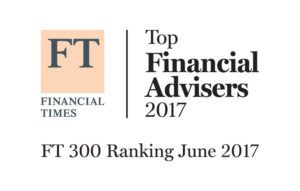Bond Market Corner
The bond market continued to surprise investors during the fourth quarter. Despite investors’ fears of higher interest-rates, longer term bond yields have maintained their low levels. The 10-year US treasury reached a high of 1.66% during the quarter before declining to 1.52% as fears over the Omnicom variant stoked fears of slower growth. Although this rate has moved up modestly during the year it has been under 2% for over 2 1/2 years. Throughout 2021 the Federal Reserve has been buying $120 billion of treasury and mortgage-backed securities each month. As a result of stronger recent economic numbers, including improved employment and higher inflation, the Fed has announced a reduction in its bond buying program that would result in it ending by March of 2022. At that time, it would have the flexibility to raise interest rates if necessary. The recent Fed meeting minutes showed the rate rise has broad support among Fed members. This is much sooner than investors had expected, and the bond market’s reaction has been to push up short term interest rates anticipating this action.
The Fed has a stated goal of achieving maximum employment and keeping inflation at slightly above 2%. The goal of 2% inflation has clearly been achieved. The belief has been that recently reported inflation numbers, which reached as high as 6% in November, is transitory and due primarily to supply chain and labor issues stemming from the pandemic. However, inflation has not subsided, and now the view is high inflation, while transitory, may persist for longer. Furthermore, supply chain issues could come to the forefront again if new variants extend the economic pause from the pandemic. Further supply chain issues could fuel higher prices. In response to the risk of inflation persisting and increasing the Fed has decided to accelerate its reduction in bond buying and potentially accelerating an increase in interest rates. The Fed will prioritize inflation and hike short term interest rates to keep it under control, even if the economy were to slow or employment fail to achieve its goals. Failure to restrain inflation could lead to a wage price spiral where workers expecting higher prices demand higher wages which in turn results in companies raising prices to compensate. Raising interest rates typically slows economic growth by increasing borrowing costs and pushing consumers to spend less, thereby cooling inflation as well. The impact of the Fed raising short term interest rates typically leads to a flatter yield curve whereby short-term rates rise more than long term rates. We have already seen this even though no action has been taken. For example, the two-year treasury yield was .29% at the end of September and the 10-year yielded 1.52%. This was a positive spread difference of +123 basis points (BPS). At year end the two-year was .73% and the 10-year unchanged at 1.52%—a difference of only +79 BPS.
Our view is the Fed will raise short term rates at least three times in 2022. With the Fed Funds rate currently at .25% the new range by year end could be .75%-1%. The yield curve has already adjusted somewhat to this potential increase. Further curve flattening will be modest unless the economy were to slow significantly, and inflation were to decline closer to the Fed’s 2% target. More likely longer-term yields can be expected to increase. We have already seen this with 10-year yield increasing over 20 BPS since year end to 1.73%. If inflation does prove to be transitory then a 10-year yield of 2% would present a good entry point for bonds.
In the current low-rate environment investors’ insatiable appetite for yield remains unabated. One way to see this is to look at bonds with credit risk. The yield of a bond, which factors into what an investor’s return will be, depends partially on the creditworthiness of the underlying bond issuer—the riskier the entity, the greater the yield. Most bonds with credit risk are priced at some yield premium, known as credit spread, over US treasuries which are considered risk-free. As investors search for higher yields, this premium has declined. Junk or high yield bonds might be the best example of today’s yield drought. These highly leveraged companies historically have provided a significant premium over treasuries to compensate investors for the risk of default. Yield levels of 9% to 11% were not uncommon even a few years ago. Recently, junk bond yields slipped below 4% showing the willingness of investors to overlook credit risk to gain higher income. The yield premium on junk bonds reached a recent historic low of 250 BPS. This shrinking risk premium is true up and down the credit spectrum and across borders and bond markets, a phenomenon supported by central banks’ accommodative monetary policies. This is certainly something to be wary of as the vulnerability of risk assets is underscored by this phenomenon.
Fixed Income strategies for rising interest rate environment
Interest rates may not go up significantly in the immediate future, but they certainly are not going to decline much more and will eventually head higher. Some strategies fixed income investors can use to protect against rising rates— (1) Invest in floating rate bonds. These securities will adjust their coupons higher as short-term rates increase thereby protecting principal in as rates rise. The easiest way to invest in these securities is through floating rate funds offered by many fund companies; (2) Buy inflation protected bonds. The nemesis of fixed income securities is inflation; it eats away at a bond’s value as bond coupons are fixed and as inflation increases, the value of these fixed payments declines. Inflation protected bonds also have fixed coupons, but their principal adjusts higher as inflation rises. Therefore, the investor potentially receives more principal at maturity as well as higher interest payments during the holding period, as the coupon payments will be based on a higher principal amount during the bond’s life; (3) Stick to higher quality bonds. A long period of low rates has pushed many investors into lower rated bonds in search of yield. As the Fed raises rates, riskier debt may feel more pressure as investors dial back. Currently the yield differential between high and lower quality bonds is historically narrow, meaning it doesn’t pay to take on more risk; (4) Build a bond ladder. Building it with maturities from one to eight or even 10 years will allow an investor to capture today’s yields but also afford the opportunity to capture rising rates as bonds in the ladder mature. This is best done through a portfolio of individual fixed income securities. High quality corporate bonds would be most suitable here; (5) Roll down the yield curve. So long as the Treasury yield curve is positively sloped (long rates higher than short term rates), each passing year will result in a bond being priced of a shorter maturity treasury with a lower yield since its maturity is one year less. The result is a higher bond price just from the passage of time. A well-built bond ladder will allow an investor to advantageously roll down the yield curve.
These are just a few strategies to protect against higher interest rates. Of course, the best defense is to hold cash and have no potential for capital loss. However, given our expectation of modest rate increases combined with today’s low interest rates, a cash portfolio would have a high opportunity cost in lost income.
As always, if you have any questions about fixed income strategies, call us at (833) 888-0534 extension 2 or request an introductory meeting here.
The views and information contained in this article and on this website are those of West Branch Capital LLC and are provided for general information. The information herein should not serve as the sole determining factor for making legal, tax, or investment decisions. All information is obtained from sources believed to be reliable, but West Branch Capital LLC does not guarantee its reliability. West Branch Capital LLC is not an attorney, accountant or actuary and does not provide legal, tax, accounting or actuarial advice.
About The Author
James K. Ho
Jim has over thirty years of investment management experience. He is a Managing Director and Principal of the firm. Prior to West Branch Capital, Jim was a fixed income Portfolio Manager at John Hancock Advisors. Previously, he managed the John Hancock Tax Exempt Income Trust. Prior to joining John Hancock Advisors, Jim was a Senior Investment Officer at The New England (MetLife), where he managed multiple bond portfolios, including taxable and tax exempt mutual funds and separate accounts. Jim holds an M.B.A. from Columbia University, New York, as well as an M.S. in Applied Math and B.S. in Applied Math and Economics from the State University of New York at Stony Brook. He is a Chartered Financial Analyst and a member of the Boston Society of Security Analysts.
Recent Articles

Categories




